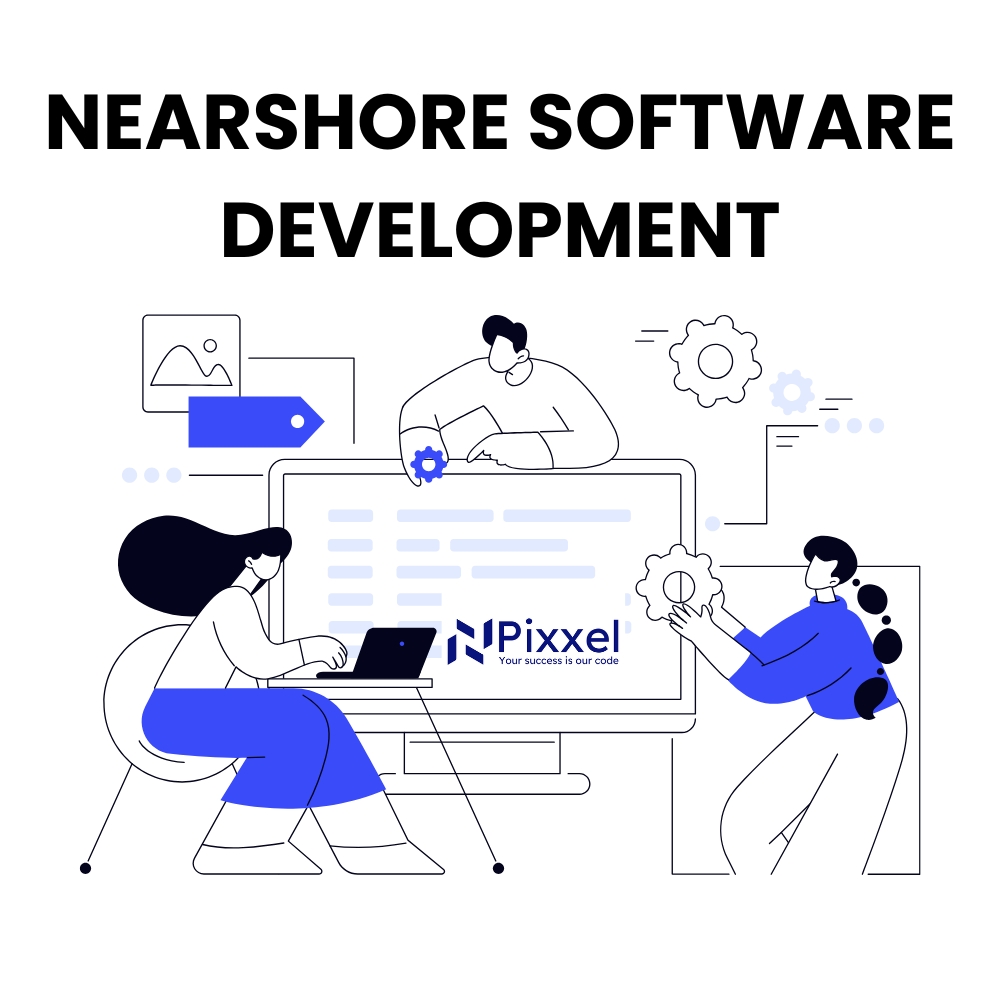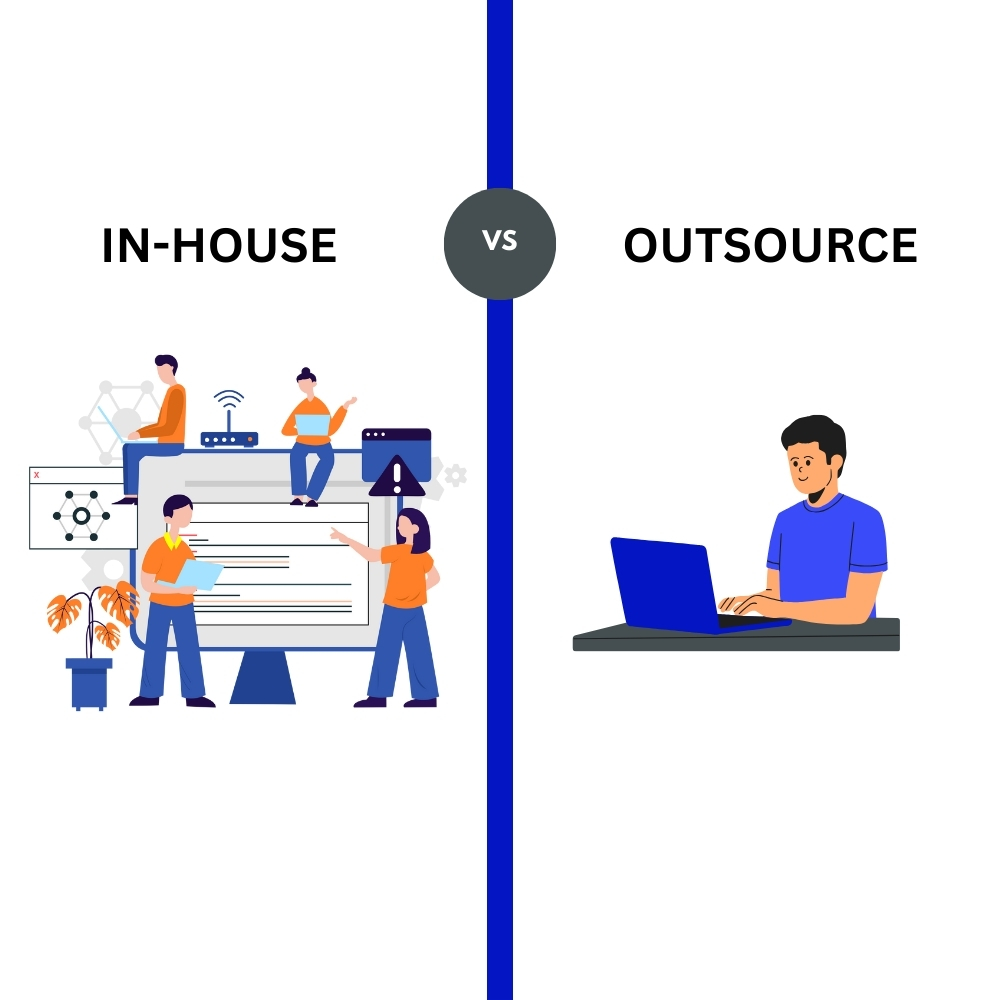Outsourcing isn’t just about saving money—it’s about unlocking potential. According to Deloitte, the most outsourced services are IT (54%), Finance (44%), and Payroll (32%). That’s where nearshore software development comes into play. By collaborating with teams in nearby countries, you can achieve seamless communication, cultural compatibility, and cost-effective scalability.
Nearshore development offers a powerful combination of proximity, talent, and affordability. Whether you’re tackling talent shortages, tight deadlines, or outdated systems, this approach bridges the gap between local collaboration and global savings. Ready to see how nearshore solutions can elevate your projects? Let’s dive into the details.
Key Takeaways
- Nearshore software development combines cost efficiency with smooth collaboration and quality.
- It’s ideal for strategic, collaborative, and technically complex projects.
- Time zone alignment and cultural similarities make nearshore teams easy to work with.
- Latin America and Eastern Europe are top nearshore destinations.
- Choosing the right partner and managing challenges effectively ensures success.
Definition and Overview
Nearshore software development is one of the software development outsourcing models that involves outsourcing software projects to teams located in neighboring or nearby countries. For example, companies in the United States often collaborate with teams in Latin America. The goal is to balance cost efficiency with excellent communication and collaboration.
Key Characteristics of Nearshore Development
- Proximity & Cultural: Geographical closeness fosters seamless communication.
- Cost Efficiency: Savings without compromising quality.
- Flexible & Scalable: Dynamic resource utilization for projects.
- Technical Expertise: High-level competence and modern standards.
- Risk Management: Proactive measures minimize challenges.
Onshoring Vs. Nearshoring Vs. Offshoring
Nearshore software development strikes a middle ground. It offers cost savings and collaboration benefits compared to onshore options and avoids the time zone and communication challenges of offshore outsourcing. Here’s how it compares.
| Aspect | Onshoring | Nearshoring | Offshoring |
|---|---|---|---|
| Key Definition | Hiring teams within your own country for close oversight. | Working with a team in a nearby country with minimal time zone differences. | Hiring external developers in a different country. |
| Team Commitment & Duration | Provides the best alignment with local operations. | Better alignment with time zones for easier collaboration. | Scalable teams according to your project needs. |
| Pros | High oversight and real-time collaboration. | Real-time collaboration, cultural familiarity. | Cost savings, access to global talent. |
| Cons | Most expensive option. | May not achieve the same cost efficiency as offshoring. | Cultural, quality and time zone differences may arise. |
Benefits of Nearshore Software Development
Nearshore software development provides a balance between cost savings, effective collaboration, and high-quality output.
- Cost-effective development without compromising quality.
- Real-time collaboration due to overlapping working hours.
- Improved cultural alignment and language proficiency.
- Faster time-to-market with skilled professionals.
- Simplified legal and compliance management compared to offshore software development.
Cost Savings
Nearshore development allows you to access high-quality software development services at a cheaper price then onshore hiring. Labor costs in nearshore regions are lower, yet the skill level and technical expertise remain competitive. This makes nearshore development an excellent option if you’re seeking affordable, high-performance software solutions. The same cannot be said for offshoring.
Educational Level
Although hourly rates are often lower, this does not automatically mean lower quality. Schools and universities ensure a minimum quality standard, so students receive a solid education and software developers are qualified and competent. In our neighboring European countries, we have rarely had issues with developers.
Time Zone Alignment
With nearshore development, you work with a team in your time zone or with only minimal time differences. This ensures that teams operate within similar or overlapping business hours. It allows for real-time updates, quick problem-solving, and a smooth workflow, reducing project bottlenecks and misunderstandings.
Cultural Compatibility
Cultural and linguistic barriers can cause serious challenges in software development projects. Nearshore teams generally share a common cultural background, business practices, and language proficiency with you. This makes communication clearer and prevents misunderstandings that could slow down project development.
Faster Time-to-Market
Nearshore teams are experienced professionals who have worked on numerous international projects. You can accelerate development timelines, shorten onboarding periods, and enhance agility when launching products or updates. This results in faster time-to-market and increased competitiveness.
Legal and Compliance Advantages
Many nearshore regions have similar legal and compliance frameworks as your countries, making contract negotiations and intellectual property protection much easier. By working with nearshore partners, you can benefit from a more secure and legally compliant development process compared to offshore outsourcing.
Challenges in Nearshore Software Development
Nearshore software development offers many advantages, but it also comes with challenges that businesses need to address. Recognizing these challenges early and implementing strategies to mitigate them ensures smoother collaboration and project success.
- Overcoming communication barriers for seamless collaboration.
- Addressing cultural and work ethic differences to enhance productivity.
- Implementing strong legal and data security measures.
- Ensuring effective integration between in-house and nearshore teams.
- Managing risks in long-term nearshore partnerships.
Communication Barriers
Even with time zone alignment, communication challenges can arise due to differences in language nuances, expectations, and work processes. Without proper planning, miscommunication can lead to project delays and errors.
To bridge these gaps, companies should establish clear communication protocols, use project management tools, and schedule regular check-ins. Video calls, instant messaging platforms, and shared documentation repositories help ensure that all team members stay informed and aligned. Encouraging an open communication culture, where team members feel comfortable raising concerns, also contributes to project efficiency.
Cultural and Work Ethic Differences
Cultural variations in work ethics, leadership styles, and decision-making processes can sometimes create misunderstandings between our nearshore teams and your in-house employees. Some teams may prioritize hierarchical decision-making, while others prefer collaborative approaches.
To foster better collaboration, you can set clear expectations from the start, and encourage mutual understanding. We make sure to establish common ground and aligning on work styles helps us build a more cohesive and productive team.
Legal and Data Security Concerns
Working with a nearshore development team means sharing sensitive business information and intellectual property. If security measures are not properly addressed, there could be risks related to data breaches, compliance violations, and intellectual property theft.
You must ensure that your nearshore partners adhere to international security standards, such as GDPR, HIPAA, or ISO27001, depending on their industry.
We provide contracts that clearly outline data protection policies, confidentiality agreements, and liability clauses to mitigate risks. We also perform regular security audits and compliance checks to further strengthen trust and protect business assets.
At Pixxel Solutions, we sign an NDA and make sure that all the intellectual property rights belong to you.
Ensuring Seamless Integration
One of the key factors in the success of nearshore development projects is ensuring that nearshore teams work seamlessly with your in-house teams. A lack of integration can lead to duplication of efforts, inefficiencies, and misaligned project goals.
You can focus on creating a collaborative environment by implementing standardized workflows, common development tools, and shared knowledge bases.
Encouraging direct interaction between nearshore and in-house employees, such as virtual team-building activities or cross-training sessions, helps build rapport and improves collaboration.
Mitigating Risks
Nearshore software development partnerships are often long-term commitments, making it essential to proactively manage risks.
Business needs and team dynamics can evolve over time, and failure to address changes can impact project outcomes. You should establish clear performance metrics, regular progress evaluations, and contingency plans to maintain flexibility in your partnerships.
Building strong relationships based on transparency, trust, and shared goals ensures the longevity of nearshore collaborations.
Selecting the Right Nearshore Software Development Partner
Selecting the right nearshore software development partner is critical for project success.
- Verify the company’s track record and past projects.
- Assess their technical expertise and industry experience.
- Evaluate communication processes and project management skills.
- Ensure compliance with security, privacy, and legal standards.
Verifying Past Projects
Choosing the right nearshore provider involves thorough research and evaluation. You should assess case studies, client testimonials, and the provider’s industry experience to determine if they are the right fit. A reliable partner should have a strong technical background, effective communication processes, and a history of successful project delivery.
Evaluating Technical Expertise
A nearshore development team should be highly skilled in modern programming languages, frameworks, and tools relevant to the project. Industry-specific experience is also essential, as it ensures that the team understands the unique challenges and compliance requirements of the business sector.
Communication and Project Management Capabilities
Successful nearshore partnerships rely on clear communication and efficient project management. The ideal nearshore provider should use Agile or Scrum methodologies to ensure that the development process is well-structured, transparent, and flexible. Regular meetings, clear documentation, and proactive updates are essential for a smooth collaboration.
Security, Compliance, and Legal Considerations
When working with a nearshore team, businesses must prioritize data security, legal compliance, and intellectual property protection. Contracts should include confidentiality agreements, liability clauses, and compliance with relevant regulations such as GDPR or HIPAA. Ensuring that a nearshore provider follows international security standards helps prevent legal complications.






